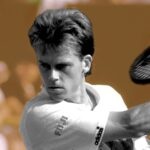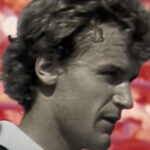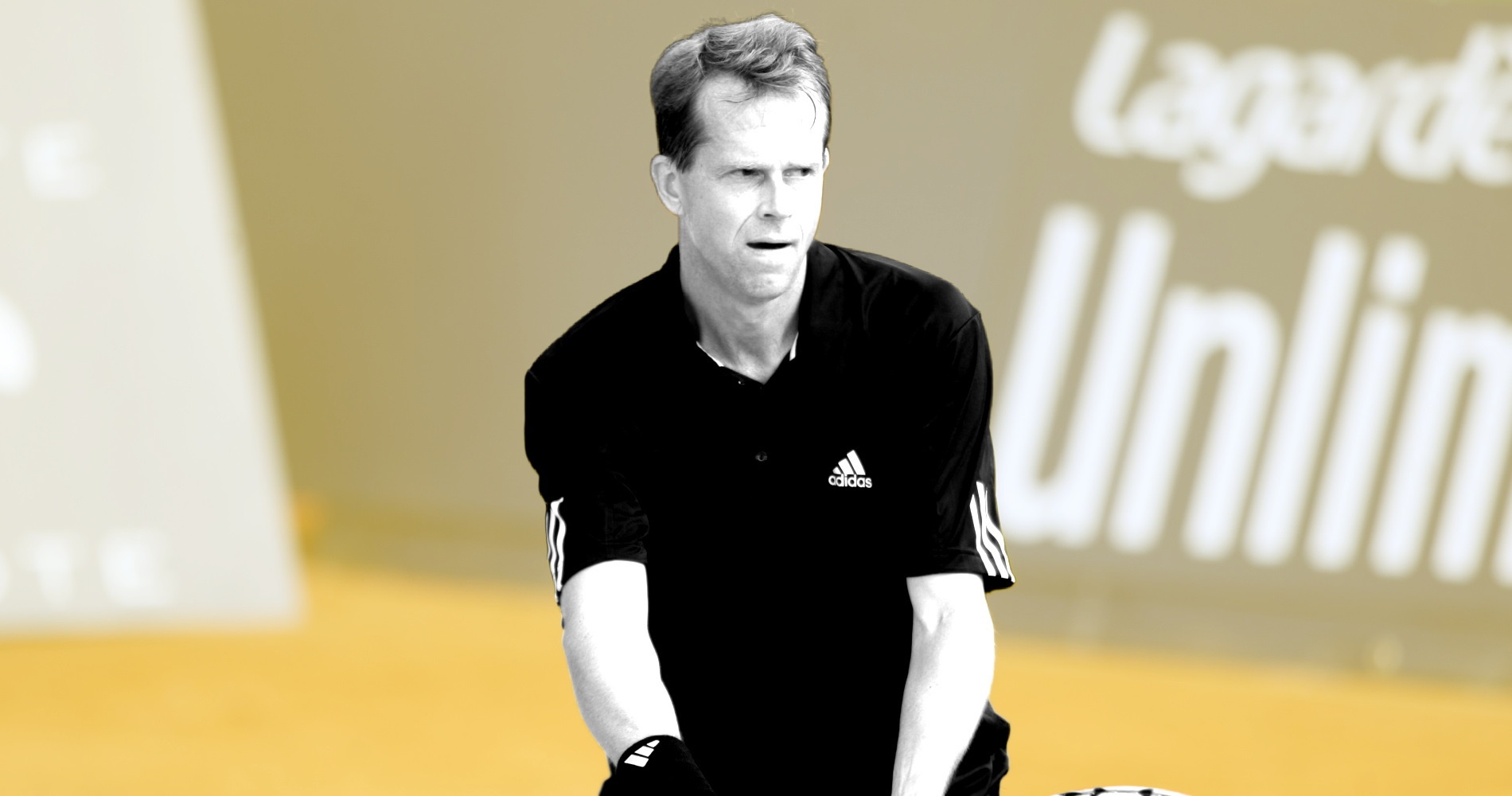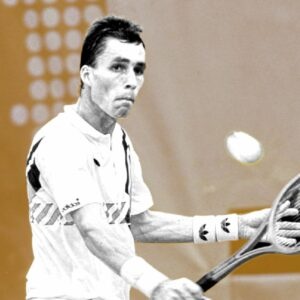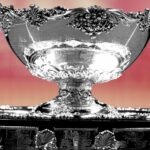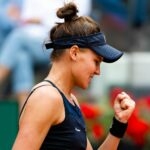December 9, 1985: The day Stefan Edberg claimed his first Grand Slam title
Every day, Tennis Majors takes you back to one of the biggest moments in tennis history. On this day in 1985, 19-year-old, and future world No 1, Stefan Edberg and Mats Wilander faced off in the Australian Open final, just days before teaming up to play the Davis Cup final
 Stefan Edberg, On this day 9.12.2020
Stefan Edberg, On this day 9.12.2020
What exactly happened on that day?
On this day, December 9 in 1985, 19-year-old and future world No 1 Stefan Edberg claimed his first Grand Slam title, defeating fellow Swede Mats Wilander in the Australian Open final (6-4, 6-3, 6-3). Edberg’s victory confirmed the change of the guard on the tour in 1985, as he was the second newcomer to win a major title after Boris Becker had triumphed at Wimbledon in July. After the final, the two Swedish players flew back home together as they had to prepare for the Davis Cup final against West Germany.
The players: Stefan Edberg and Mats Wilander
- Stefan Edberg: the serve-and-volley specialist from Sweden
Stefan Edberg, unlike his famous countrymen Bjorn Borg and Mats Wilander, played serve-and-volley tennis. Born in 1966, he was very successful in junior tournaments: in 1983, he achieved the junior Grand Slam but almost quit the sport the same year at the age of 17 after one of his serves accidentally resulted in the death of a line judge in New York. He continued and didn’t regret it. The Swede, who had bravely abandoned a two-handed backhand for a single-handed one at the age of 15, claimed his first professional title as early as 1984 in Milan, defeating Wilander in the final (6-4, 6-2).
The same year, he reached the quarter-finals at the Australian Open, without beating any top 50 player (defeated by Wilander again, 7-5, 6-3, 1-6, 6-4). In 1985, he added three additional titles to his list of achievements (Memphis, San Francisco and Basel), and at the beginning of the Australian Open, which was still held in December at the time, he was ranked No 6 in the world. However, to entrench himself as one of the best players in the world, he still needed a breakthrough result at the Grand Slam stage.
- Mats Wilander: the youngest player ever to win a Grand Slam title
Mats Wilander, born in 1964, had been very successful at a particularly young age. In 1982, aged just 17 years and 10 months, he became the youngest player ever to win a Grand Slam title, beating clay court legend Guillermo Vilas in the French Open final (1-6, 7-6, 6-0, 6-4). He also made himself famous for a memorable act of sportsmanship earlier in that tournament. In the semi-final against Jose-Luis Clerc, on his first match point, he reversed a call that would have sealed his victory after the umpire had already announced “game, set and match”. In 1982, in a Davis Cup quarter-final, he also played the longest match of the Open Era, losing after six hours and 22 minutes of play to John McEnroe (9-7, 6-2, 15-17, 3-6, 8-6).
Runner-up to Frenchman Yannick Noah at Roland-Garros in 1983 (6-2, 7-5, 7-6), Wilander won a second Grand Slam title a few months later, defeating Ivan Lendl (6-1, 6-4, 6-4) to triumph on the Australian grass to everyone’s surprise, as his game style was more suited to clay. In 1984, he successfully defended his title in Melbourne (beating Kevin Curren in the final, 6-7, 6-4, 7-6, 6-2), and in 1985, he added a second Roland-Garros trophy to his list of achievements (beating Lendl in the final, 3-6, 6-4, 6-2, 6-2). Wilander had also led the Swedish team to its first ever Davis Cup title in 1984, and his team was also qualified for the 1985 final. At the start of the Australian Open, he was ranked No 3 in the world.
The place: The Australian Open in Melbourne
Unlike the other Grand Slam tournaments, the Australian Open (first known as the Australasian Championships and later the Australian Championships) had moved several locations throughout the years. In fact, the event switched cities every year before it settled in Melbourne in 1972, and no less than five Australian cities had hosted the event at least three times: Melbourne, Sydney, Adelaide, Brisbane and Perth.
The event was held on grass at the Kooyong Stadium in a posh eastern suburb of Melbourne. Its timing had changed on several occasions as well, between early December and January, going from being the first Grand Slam of the season to being the last. Until 1982, many of the top players routinrly skipped the Australian Open because of the remoteness, the inconvenient dates (around Christmas and New Year’s Day) and the low prize money. Mats Wilander was one of the players who gave back some prestige to the tournament and he was the double defending champion, having claimed the title in 1983 and 1984.
The facts: Edberg wins in straight sets
The 1985 Australian Open final was the fifth encounter between compatriots Edberg and Wilander. So far, Wilander had prevailed four out of the five times but Edberg was on the rise. Having saved two match points in the fourth round against Wally Masur (6-7, 2-6, 7-6, 6-4, 6-2) before defeating world No 1 Ivan Lendl in the semi-finals (6-7, 7-5, 6-1, 4-6, 9-7), Edberg had proven that he was “made of the right stuff”, to quote his coach, Tony Pickard. Yet, after having played two five-set matches, there was a chance that he could be physically exhausted against his consistent countryman, who had already won four Grand Slam titles, including the 1983 and 1984 Australian Open.
Wilander had reached the final without dropping a single set, but what should have worked in his favour might have actually led to his downfall. To defeat the world No 1Lendl in the semi-finals, Edberg had had to sharpen his serve-and-volley game, and he started the final at such a high level that his opponent couldn’t keep up. Wilander was totally outplayed from the start to the end of a very one-sided match, to the point where he lost a bit of his usual calm, asking the umpire to check the height of the net and asking a line-umpire to remove his jacket because the sun was allegedly reflecting on its buttons. After his four-hour fight in the semi-finals, the last match seemed almost easy for Edberg, who won 6-4, 6-3, 6-3 in only one hour and 33 minutes.
”This has been one of my greatest tournaments ever,” Edberg said after his victory, according to The New York Times. ”I’ve never been so happy in my life.”
Despite his disappointment, Wilander kept his sportsmanship. “If there’s somebody I don’t mind very much to lose to, it’s Stefan. He’s a very good friend.” Hearing this was probably a relief for the Swedish Davis Cup captain, as the two players were about to team up in the Davis Cup final against West Germany, three weeks later.
What next? Edberg and Wilander help Sweden win the Davis Cup
Although Boris Becker would defeat both Wilander and Edberg, the Swedes with the help of Joakim Nyström in the doubles, would beat West Germany in the Davis Cup final just a few days before Christmas.
Edberg would successfully defend his title in 1986, claiming the second of the six Grand Slam singles titles he would win throughout his career, with two Wimbledon crowns (1988, 1990) and two US Open trophies (1991, 1992). Edberg would become world No 1 on August 13, 1990, a spot he would hold for 72 weeks in total.
Wilander’s peak year would undoubtedly be 1988, when he would reach world No 1 spot after claiming three of the four Grand Slam titles. In total, Wilander would win seven Grand Slam titles, including three Australian Open crowns. The only Major missing from his resume was Wimbledon, where he would never go past the quarter-finals.


